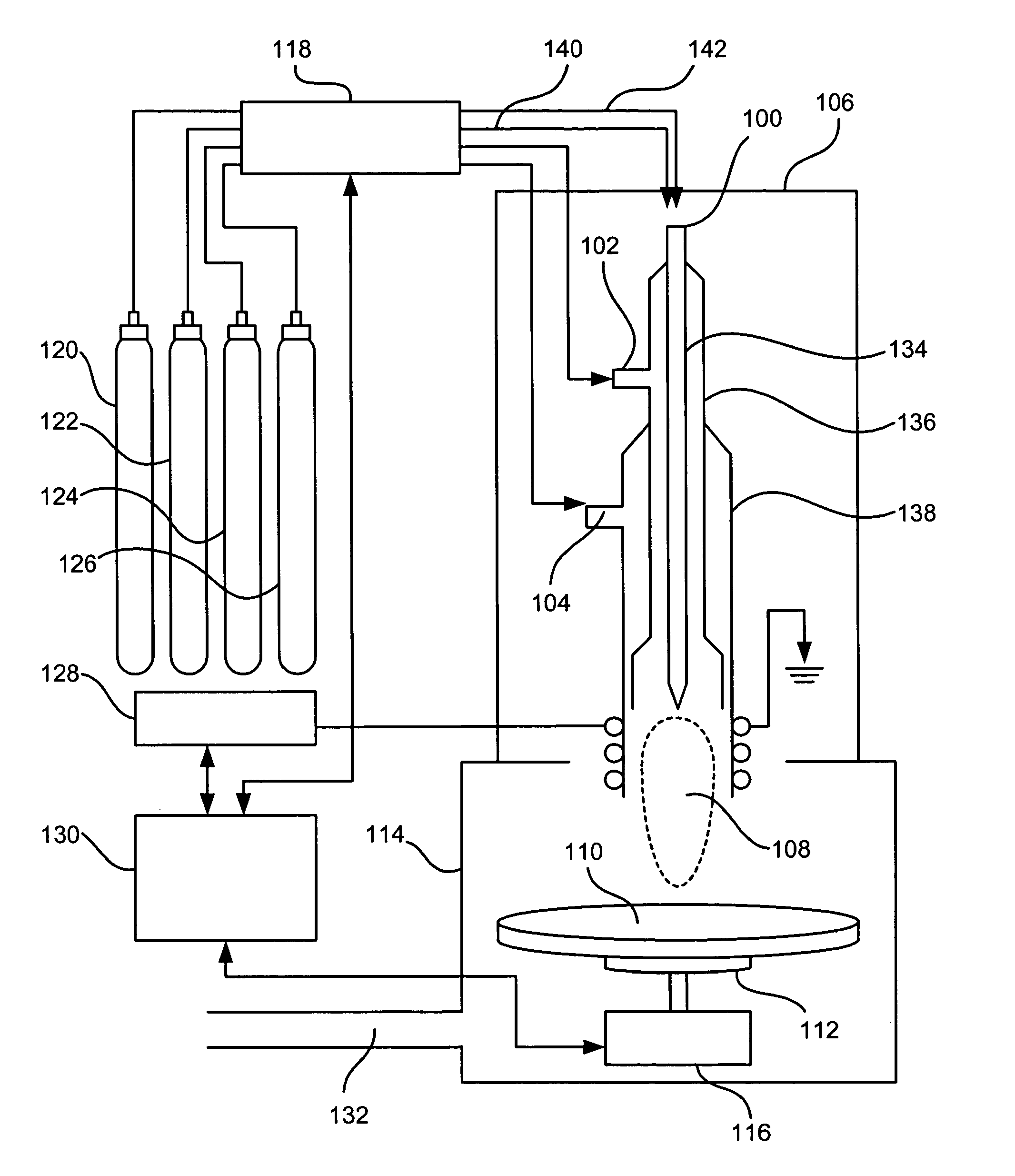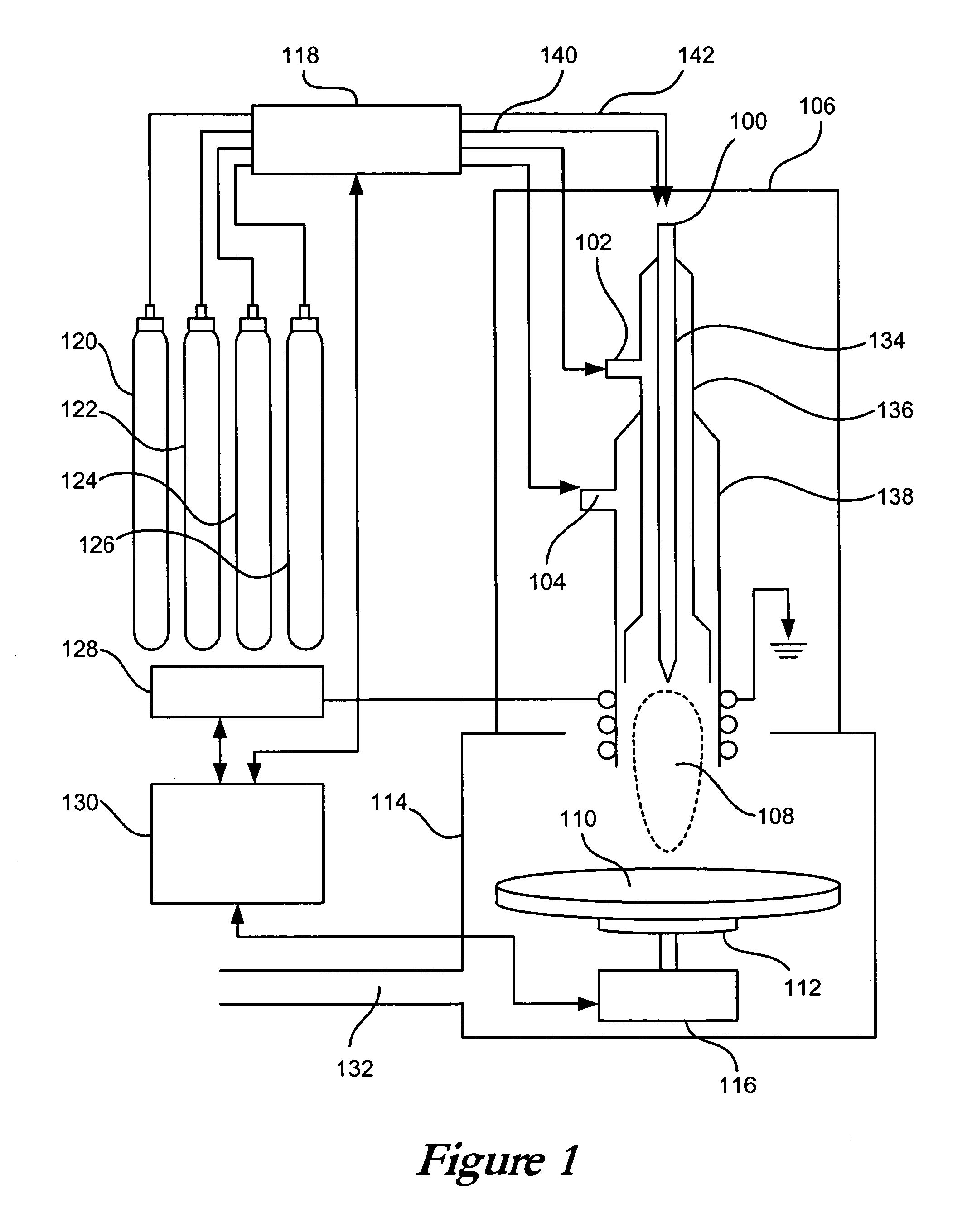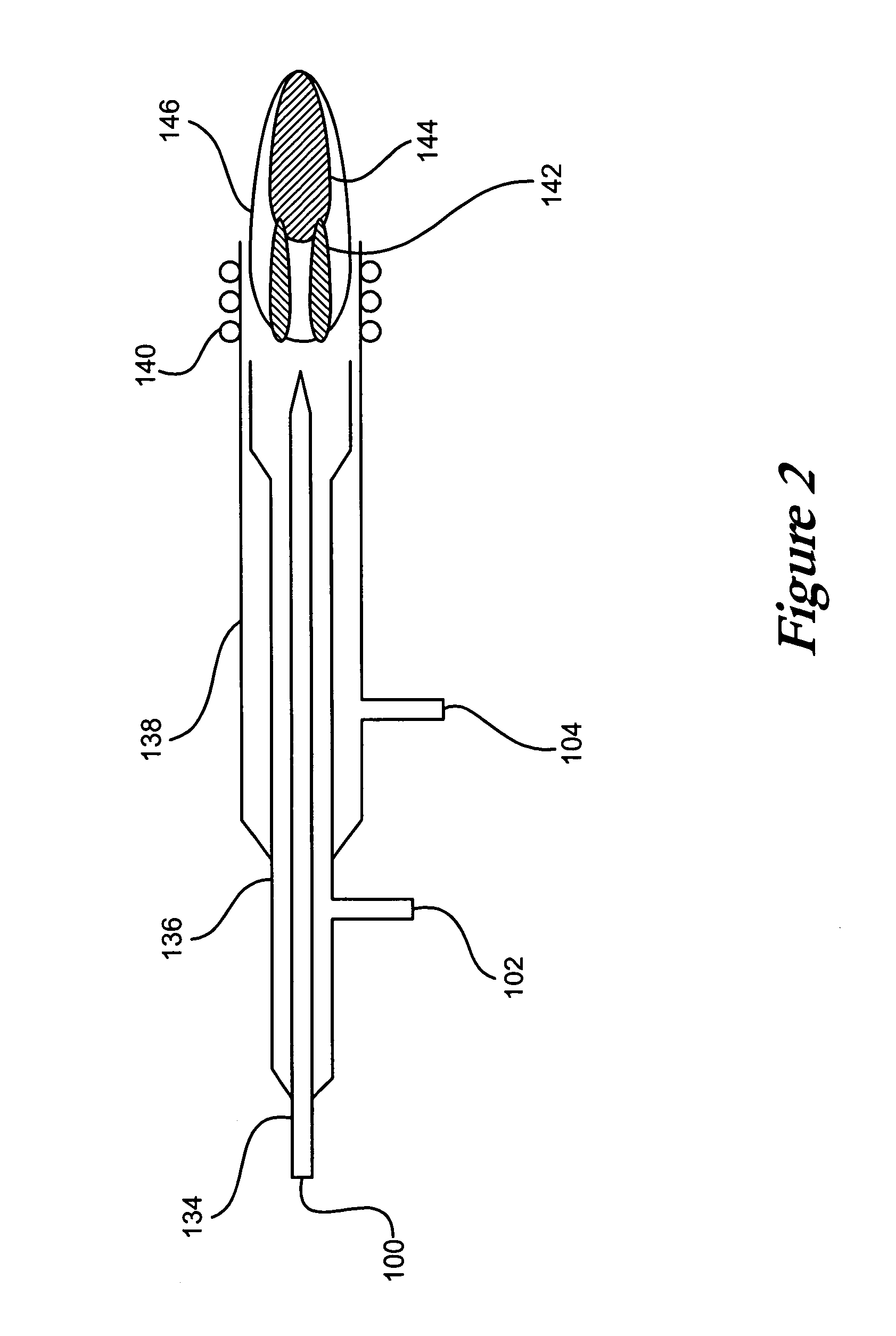Method for using a microwave source for reactive atom-plasma processing
a technology of atomplasma and microwave source, which is applied in the field of surface modification using gas plasma, can solve the problems of icp torch footprint being too large for fine-scale modifications, certain limitations and attributes, and not being desirable for specific applications, and achieve the effect of increasing the velocity of gasses flowing
- Summary
- Abstract
- Description
- Claims
- Application Information
AI Technical Summary
Benefits of technology
Problems solved by technology
Method used
Image
Examples
Embodiment Construction
[0021] A microwave-induced atmospheric pressure plasma can be an appropriate atomnization tool for several applications of a reactive atom plasma process. A microwave-induced plasma (MIP) source has proven to have a number of attributes that complement, or even surpass in some applications, the use of an ICP tool or a flame as an atomization source. Some of these advantages include a smaller footprint, which can be as low as about 0.5 mm or less, or from about 1 mm or less to about 10 mm or more, as well as a smaller and simpler device that can operate on lower flow rates of host gas and can even be run on air, nitrogen or oxygen. Flow rates for one MIP device can range between about 0.5 I / min to about 13 I / min or so, although flow rates of less than 0.5 I / min and above 13 I / min are also possible. Host gases can include, for example, Argon, Helium, nitrogen, air, CF4, oxygen and / or hydrogen. In fact, any gas phase material or combination thereof could be used.
[0022] The plasma can ...
PUM
| Property | Measurement | Unit |
|---|---|---|
| power | aaaaa | aaaaa |
| power | aaaaa | aaaaa |
| power | aaaaa | aaaaa |
Abstract
Description
Claims
Application Information
 Login to View More
Login to View More - R&D
- Intellectual Property
- Life Sciences
- Materials
- Tech Scout
- Unparalleled Data Quality
- Higher Quality Content
- 60% Fewer Hallucinations
Browse by: Latest US Patents, China's latest patents, Technical Efficacy Thesaurus, Application Domain, Technology Topic, Popular Technical Reports.
© 2025 PatSnap. All rights reserved.Legal|Privacy policy|Modern Slavery Act Transparency Statement|Sitemap|About US| Contact US: help@patsnap.com



